|
Alaska Subsistence Harvest
Alaska is the only state where migratory bird and egg hunting is allowed in
spring and summer in certain rural areas for subsistence needs. The spring-summer
subsistence season was legalized starting in 2003, following amendments in 1997 to
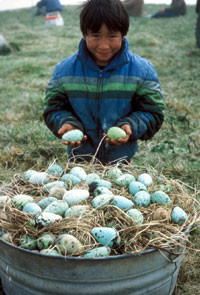 the migratory bird treaties with Canada and Mexico. The amendments
recognized customary and traditional practices and provide for regulated subsistence
hunting of migratory birds and their eggs by indigenous peoples in Alaska
and Canada. the migratory bird treaties with Canada and Mexico. The amendments
recognized customary and traditional practices and provide for regulated subsistence
hunting of migratory birds and their eggs by indigenous peoples in Alaska
and Canada.
Alaska Migratory Bird
Co-management Council
The Alaska Migratory Bird Co-management Council (AMBCC) was formed in 2000 and comprises
representatives of the U.S. Fish and Wildlife Service, Alaska Department of Fish and Game,
and Native Caucus, which includes Alaska Native representatives from each of the 10
subsistence regions in Alaska. The AMBCC's primary purpose is to conserve migratory birds
through development of recommendations for spring-summer subsistence harvest in Alaska.
The AMBCC provides recommendations to the Pacific Flyway Council, U.S. Fish and Wildlife
Service, and others for the annual spring-summer subsistence season in Alaska and other
topics related to the conservation and harvest of migratory birds.
Indigenous Peoples Way of Life
There are about 250 remote communities in Alaska, most of them without road connection.
These communities vary in size from a couple dozen to a few thousand people, and largely
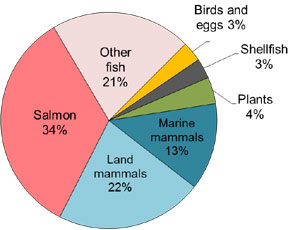 comprise Alaska
Native people. For thousands of years, Alaska's indigenous peoples have relied on harvest
of migratory birds and their eggs in spring-summer as part of their seasonal cycle of
subsistence activities. Contemporary Alaska Native cultures are supported by mixed
subsistence and cash economies. Harvesting and sharing subsistence foods keep communities
together. Although Alaska Native people also buy food in stores, harvest still occurs
yearlong following seasonal cycles of availability of diverse animals and plants. comprise Alaska
Native people. For thousands of years, Alaska's indigenous peoples have relied on harvest
of migratory birds and their eggs in spring-summer as part of their seasonal cycle of
subsistence activities. Contemporary Alaska Native cultures are supported by mixed
subsistence and cash economies. Harvesting and sharing subsistence foods keep communities
together. Although Alaska Native people also buy food in stores, harvest still occurs
yearlong following seasonal cycles of availability of diverse animals and plants.
Harvesting, processing, and preserving animals and plants for food is a lot of work.
Thus, subsistence harvest practices seek efficiency in time, effort, and costs. The
high cost of harvesting equipment and supplies together with the relatively low income
in the villages necessitates efficient harvest practices.
Total subsistence harvest of all resources in Alaska is 38.3 million edible pounds of
food per year. This is almost 1 lb per person per day, and provides 190% of the daily
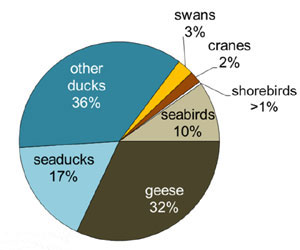 protein needs and 26% of the daily energy needs. Birds and
eggs are a small part (3%) of the total subsistence harvest in Alaska, but they have
economic, social, and spiritual value. Harvest of migratory birds at times when few
other food resources are available, particularly in spring, ties together the seasonal
cycle of harvest until other resources, such as salmon, become available. In spring,
arriving migratory birds are the first fresh food available after a long winter of
preserved foods. Birds and eggs add diversity to the subsistence diet. Ducks and geese
account for 85% of the subsistence harvest of migratory birds in Alaska. protein needs and 26% of the daily energy needs. Birds and
eggs are a small part (3%) of the total subsistence harvest in Alaska, but they have
economic, social, and spiritual value. Harvest of migratory birds at times when few
other food resources are available, particularly in spring, ties together the seasonal
cycle of harvest until other resources, such as salmon, become available. In spring,
arriving migratory birds are the first fresh food available after a long winter of
preserved foods. Birds and eggs add diversity to the subsistence diet. Ducks and geese
account for 85% of the subsistence harvest of migratory birds in Alaska.
Subsistence Harvest Survey
The Harvest
Assessment Program (HAP) of the AMBCC documents subsistence harvest of migratory
birds and their eggs in Alaska. The survey is based on household in-person interviews
and is conducted in collaboration among the U.S. Fish and Wildlife Service, Alaska
Department of Fish and Game, and Alaska Natives. Because of low participation of
Alaska subsistence users in the Harvest Information Program
designed to estimate harvest during the general season in fall and winter, the HAP
subsistence survey estimates harvest during fall and winter in addition to spring and
summer. Annual reports provide harvest estimates for regions and sub-regions.
Subsistence harvest in Alaska accounts for about 5% of the total migratory bird
harvest in the Pacific Flyway.
Subsistence Harvest Regulations
The spring-summer subsistence
regulations are based on traditional harvest practices with consideration of migratory
bird population status and protection of nesting birds. About 92 species or subspecies of
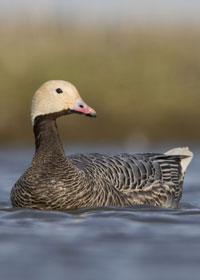 migratory birds are
open to bird and egg harvest including waterfowl, waterbirds, shorebirds, seabirds, cranes,
and owls. The most commonly harvested birds (85%) are ducks and geese, but the intent of
having a diversity of species open to harvest is that, in the case of need, people could
take other birds without being illegal. There are generally no bag or possession limits to
allow for efficient harvest and sharing of resources with family and community. The few
hunters in the community share their harvest with non-hunters. Customary and traditional
subsistence harvest practices involve concepts of self-limitation, no waste, and harvest
goals according to ability to process, preserve, and use birds and eggs taken. migratory birds are
open to bird and egg harvest including waterfowl, waterbirds, shorebirds, seabirds, cranes,
and owls. The most commonly harvested birds (85%) are ducks and geese, but the intent of
having a diversity of species open to harvest is that, in the case of need, people could
take other birds without being illegal. There are generally no bag or possession limits to
allow for efficient harvest and sharing of resources with family and community. The few
hunters in the community share their harvest with non-hunters. Customary and traditional
subsistence harvest practices involve concepts of self-limitation, no waste, and harvest
goals according to ability to process, preserve, and use birds and eggs taken.
Possible dates for spring-summer subsistence hunting are during March 11 through August 31
(migratory bird treaty with Canada). However, season length is limited to 124 days (migratory
bird treaty with Mexico), and hunting seasons must be closed during the principal nesting
periods (migratory bird treaty with Japan) interpreted as a minimum of 30 days. Considering
the outside dates and nesting period closure, the season must be closed for an additional 20
days. The AMBCC recommended that 22 days be taken off at the beginning of the available dates,
which resulted in a season generally running from April 2 through August 31 less any closures
necessary during the principal nesting periods (see subsistence regulations for region
specific seasons).
The Pacific Flyway Council works with the AMBCC to develop migratory bird hunting regulations
for subsistence needs and coordinate management of migratory birds. Each year, the AMBCC
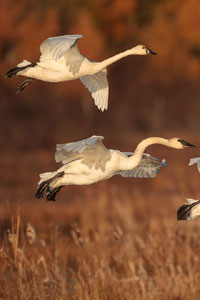 reviews proposals for
spring-summer subsistence hunting regulations, and makes recommendations to the U.S. Fish
and Wildlife Service. Recommendations from the AMBCC are submitted to all Flyway Councils
for review and comment. The Pacific Flyway Council presents the AMBCC recommendations to
the Service Regulations Committee (SRC) of the U.S. Fish and Wildlife Service. The SRC
reviews the proposals and makes a recommendation to the Director of the U.S. Fish and
Wildlife Service who then makes a recommendation to the Secretary of the U.S. Department
of the Interior. Approved subsistence regulations are published as proposed and final
rules in the Federal Register.
Publics may comment on proposed regulations by attending public meetings of the AMBCC, Pacific
Flyway Council, and SRC, or by submitting written comments during the state and federal
rulemaking process when regulations are proposed. See the
Regulations page for more details on the rulemaking process. reviews proposals for
spring-summer subsistence hunting regulations, and makes recommendations to the U.S. Fish
and Wildlife Service. Recommendations from the AMBCC are submitted to all Flyway Councils
for review and comment. The Pacific Flyway Council presents the AMBCC recommendations to
the Service Regulations Committee (SRC) of the U.S. Fish and Wildlife Service. The SRC
reviews the proposals and makes a recommendation to the Director of the U.S. Fish and
Wildlife Service who then makes a recommendation to the Secretary of the U.S. Department
of the Interior. Approved subsistence regulations are published as proposed and final
rules in the Federal Register.
Publics may comment on proposed regulations by attending public meetings of the AMBCC, Pacific
Flyway Council, and SRC, or by submitting written comments during the state and federal
rulemaking process when regulations are proposed. See the
Regulations page for more details on the rulemaking process.
Photo credits: St. Paul Island local with murre egg harvest, Sebert/USFWS; pie chart of
wildlife subsistence harvest, J. Fall (2016, Arctic 69:47-64); pie chart of migratory bird
subsistence harvest, A. Paige and R. Wolfe (1998, unpublished report); emperor goose,
M. Burcham; swans in flight, D. Troy.
|



